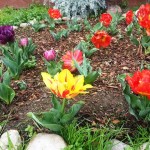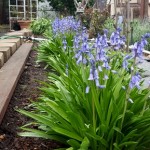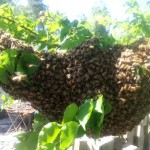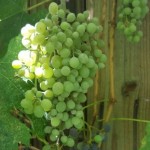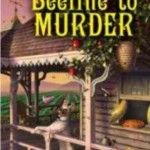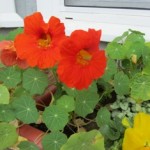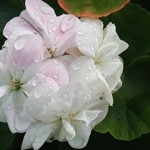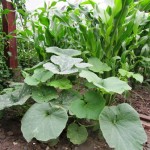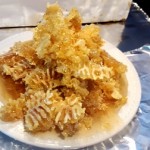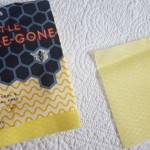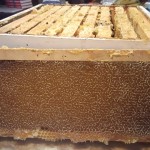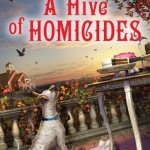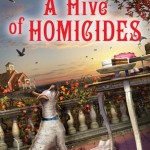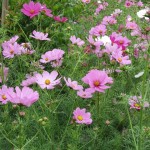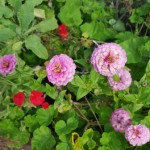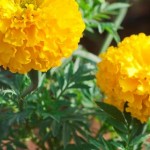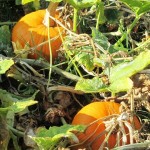Archive for the 'Gardening' Category
Nature Dresses in Dramatic Colors for Spring
Many Northern California gardens are beginning to awaken in a riot of color from bulbs planted in the fall. Local gardeners will tell you that to achieve lots of color in a spring garden, you can’t beat blooming tulip, daffodil, hyacinth, allium, crocus, anemone, and ranunculus bulbs.
Buried in the earth, the bulbs are growing and sprouting and colonizing throughout winter. Many bulbs naturalize and spread year over year. One of my favorites is the deep blue Siberian Squill (Scilla siberica). The plant comes from the family of asperagaceae and thrives in Zones 2-8.
Bright green foliage appears first. Later, tight little buds open atop sturdy, straight stems. Each flower yields a bell-shaped bloom that is roughly one-half inch wide. It is only slightly fragrant. When established, three to five flowers form a stunning blue cluster on a six-inch stalk poking above sword-like foliage.
It’s best to plant these bulbs about six inches apart and three inches deep in early fall. Choose a spot in full sun or part shade. Siberian squill require medium amounts of water. For the greatest impact, do mass plantings under deciduous shrubs and trees or in circles or rows.
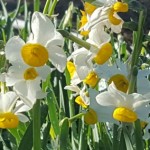
Masses of blooming daffodils provide a focus and cheery greeting in a bleak late winter or early spring garden
When planted near yellow daffodils, the rich blue color of the Siberian squill will really pop. These bulbs do not need to be lifted as they will naturalize and colonize over the years. And come spring each year, you will have dramatic color combinations sprouting all around your garden.
_________________________________________________
If you enjoy reading about gardening or farming topics, keeping chickens and bees, caring for fruit trees and vegetable gardens, or living well, check out my Henny Penny Farmette series of mysteries from Kensington Publishing and my health and wellness books from Adams Media/Simon and Schuster. The mysteries contain end-of-chapter tips on beekeeping and related topics. The rituals and meditation books feature tips and strategies for living your best peaceful life now.

More than 150 rituals for sound mind, strong body, and meaningful connections to the people around you
Springtime Projects on the Farmette
After weeks of rain, Mother Nature has put on a robe of splendor. Warm weather has arrived. Already, my beekeeper neighbor has had his honeybee hives send out three swarms.
My own bee population seems to be swelling. I’ve fished out my swarm catcher, primed it with scented lemon oil, and placed in among the blossoms in a nearby apricot tree. I may be blessed with a swarm as well.
There are plenty of other springtime projects to attend to here on my farmette. I’ve got to reassemble my temporary grape arbor. Each year, I think we’ll build a permanent structure, but there never seems to be enough time.
My cell flats have organic plants up now and ready for placing in my garden or raised beds. I’d like to add some more chicken manure to the strawberries since they are rapidly growing and producing small fruit.
Other plants need a spring feeding–the citrus, apples, and apricots, for example. I usually do the feeding before the trees break bud, so I’m a little late.
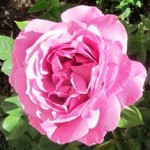
This candy-stripe rose was a gift from a friend–a cutting from her rose that became a large bush in my care
I will be turning the compost pile and mulching all my rose bushes (which have already leafed out and are setting buds). Finally, I’d like to put up a couple more bird houses (mating is already in the air) and fill my hummingbird feeders.
- This–my original flock–was massacred by a wild predator, fox or coyote, last year
I need to purchase baby chicks from the feedstore to start my new flock. Hubby and I will build a new, reinforced chicken run and expand the existing hen house.
Then, there’s the side walkway that needs pavers. Painting of the fences. Building a new porch. Widening the patio…the projects are seemingly endless, but that’s fine. We’ll have a lovely six months (maybe an occasional storm). The dry season is upon us.
And I’m ready for the Adirondack chair…oh, that’s right…we have to build it first!
_________________________________________________________________
If you enjoy reading about farming topics and you love a good cozy mystery, check out my novels from Kensington Publishing–A BEELINE TO MURDER, THE MURDER OF A QUEEN BEE, and A HIVE OF HOMICIDES. All are available on Amazon.com, Barnes & Noble.com, and other online retailers as well as in bookstores everywhere.
Helping the Hummers Refuel
In a single day of darting to and from colorful flowers, the tiny hummingbird consumes nearly half its weight in sugar as it searches for nectar-rich blossoms.
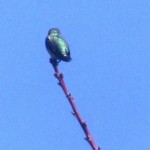
A hummer’s iridescent feathers shimmer as it perches in sunlight at the end of an apricot tree branch
Their wings beat so rapidly, they make a purring sound. Ever industrious, these tiny birds work from dawn to dusk. They are drawn to tubular-shaped flowers or brightly colored ones in shades of red, orange, blue, and pink.
If you want to help the hummers refuel, consider putting flowers on your patio or in your garden that appeal to these little energy burners. Or, better still, plant trees, vines, perennial, and annual plants that will produce the flowers that attract hummers. Choose from the list below.
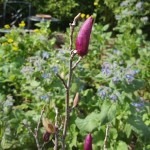
Behind the unfurled buds of the Jane magnolia are the blue blossoms of Borage, an herb frequented by bees, butterflies, and hummers
Annuals: Borage (blue star flower), impatiens, flowering tobacco, petunia, plox, salvia, and snapdragon
Perennials: aloe, alstomeria, bee balm, California fuschia, cardinal flower, columbine, coral bells, foxglove, gladiolus, parrot’s beak, monkey flower, salvia, and sage
Vines: blood red trumpet vine, cape honeysuckle, lonicera (honeysuckle), flame vine, and trumpet creeper
Trees: acacia, chinaberry tree, citrus, coral tree, eucalyptus, silk tree, and tulip tree
______________________________________________________________________
If you enjoy reading about gardening, keeping chickens and bees, and other backyard farming topics, check out my series of cozy mysteries, including A BEELINE TO MURDER, THE MURDER OF A QUEEN BEE, and A HIVE OF HOMICIDES (Kensington Publishing, NY)
A HIVE OF HOMICIDES
Murder of a Queen Bee
A Beeline to Murder
The Quiet Beauty of a Winter Garden
There is a quiet beauty in a winter garden. You must endure cold to appreciate it. On my farmette, there’s also fog and wind and misty rain. But as you gaze in mindfulness, the rewards come.
When trees are bare, you can appreciate the beauty of their scaffolding, branching habits, and fruiting spurs. There is an attractiveness about tree bark that is rough or smooth and colored in earthy hues of green, gray, or reddish brown. Bare trunks and branches provide visual interest until blossoms and blooms break in spring.
With pruning done and leaves removed, the roses rest. Birds gather at feeders and frolic in the fountains. Beneath the soft, damp earth, roots are taking in nutrients to prepare the fruit trees for a surge of growth when warmer days arrive.
The garden is a place to conjure memories and ponder life and destiny. Goethe, the German playwright, poet, and novelist wrote that “Sometimes our fate resembles a fruit tree in winter. Who would think that those branches would turn green again and blossom, but we hope it, we know it.”
Winter is the perfect time to contemplate the tap root of your being and to think and and dream and plan for what will blossom in your life when warmth and light returns. French philosopher and author Alfred Camus wrote, “In the depths of winter, I finally learned that within me there lay an invincible summer.”
I have a simple ritual of visiting my winter garden. I prepare a cup of hot water with juice of half a lemon and a tablespoon of honey or sometimes just a cup of coffee or tea. Then with cup in hand, off I go to inspect the fruit trees, the bare grape and berry vines, and the soil turned in raised boxes waiting to receive kitchen herbs. This ritual inspires me and silently powers me up with hope and energy.
Perhaps you have a similar winter ritual. If not, consider checking out my newest nonfiction book, RITUALS FOR LIFE and plant something in the earth or the garden of your psyche that holds the promise of bearing fruit in its own perfect time. Now is the time to greet each new winter day for the blessings it brings and appreciate the stark beauty of Nature.

More than 150 rituals for sound mind, strong body, and meaningful connections to the people around you
This Year, Grow A White Garden
Vita Sackville-West, prolific English author, poetess, and avid gardener described her now-famous white garden at Sissinghurst in Kent as a garden of gray, green, and white. She wrote a column about it in the Observer that was published January 22, 1950 and republished in 2009. See, https://www.theguardian.com/lifeandstyle/gardening-blog/2009/jan/22/gardens
Vita Sackville-West hoped her experiment would be successful. Still, she opined that a garden can look well enough on paper but can fail “after you tuck your plans into the soil.” You can only hope it will turn out well.
Indeed, her garden succeeded as she had hoped. It has garnered worldwide fame as the “white garden at Sissinghurst,” one of the most visited areas of the castle gardens. Her vision for it was quite simply a fairly large bed divided into halves by a paved walkway that ended with seating for visitors to sit facing the garden. Rising at their backs would be a really high hew hedge.
She envisioned many fragrant and ravishing florals sticking up through gray-green foliage. Her chosen blooms for this white garden, best experienced beneath a full moon for its appearance and scent, included dozens of tall trumpets of white Regale lilies, peonies, and irises, in hues of white to the palest creamy yellow.
In creating her garden, Sackville-West was manifesting a hoped-for result. She considered her garden as an amusing exercise and encouraged others to experiment in their gardens as well, according to their own “taste” and “opportunities.”
If you’d like to create a white garden, search for plants in white-blooming varieties and choose some for their fragrance: cleome (attracts pollinators), dianthus, primrose, evening stock (a scented annual whose fragrance intensifies at twilight), lily, phlox, night-blooming jessamine (possesses an intoxicating scent), tuberose, geranium, and white rose.
For gray-green foliage under these plants, tuck in lambs ears, snow-in-summer, or artemisia (this genus has between 200 and 400 plants). Or, use the plants Sackville-West chose for edging–specifically, Dianthus Mrs. Sinkins and Stachys Lanata).
For a small space, why not create a circular bed. Plant a fragrant, white rose, perhaps Claire Austin, named for the English rose breeder David Austin’s daughter. In a circle around the rose, plant yarrow with silvery-gray foliage. In the next layer (furthest from the rose and shortest) use bacopa, alyssum, or other white edging plants to create the outermost circle around the yarrow. The trio of layers in constant bloom creates a lovely bed with the appearance of a fairy ring–dramatic under the moonlight.
________________________________________________________
If you enjoy reading about gardening, keeping bees and chickens, and other rural topics and you like a good mystery, check out my Henny Penny Farmette series of cozies, including A BEELINE TO MURDER, THE MURDER OF A QUEEN BEE, and A HIVE OF HOMICIDES.
- All available online and in bookstores everywhere
A HIVE OF HOMICIDES
MURDER OF A QUEEN BEE
A BEELINE TO MURDER
Enrich your reading pleasure by putting on your muck boots and stepping into the world of Abigail Mackenzie and her coterie of friends in charming Las Flores, California where the local movie theater still serves up homemade pastries and locals gather at the only watering hole in town, the Black Witch.
Besides offering a cozy mystery to solve, these books are chocked full of
1. Delicious recipes
2. Farming and gardening tips
3. Facts and tips for keeping bees and chickens
4. Tidbits of farm wisdom
________________________________________________________
My newest nonfiction books include:

More than 150 rituals for sound mind, strong body, and meaningful connections to the people around you
- Anyone can find peace, clarity, and focus…all it takes is a moment
Svalbarg–Protecting Seed Diversity for Our Planet
If you’ve ever saved your favorite food crop seeds from one year to the next and then lost them because of flooding or storage failure, you might feel disheartened. But a cataclysmic loss of seed diversity for food crops in certain parts of the world could mean starvation for millions.
Roughly 1,750 genetic seed banks have been established around the globe to save seeds and preserve agricultural plant diversity. But many banks are vulnerable to threats such as war and civil strife, lack of funding, man-made and natural disasters, equipment failures, mismanagement, and other factors.
Established to protect diverse seed collections against catastrophic loss, the Svalbarg Global Seed Vault (SGSV) is a long-term backup storage facility for the world’s 1750 seed banks.
The SGSV houses millions of diverse seeds for food crops. However, Norwegian law prohibits the facility from storing genetically modified seed.
The Svalbarg Global Seed Vault is located inside a mountain on a remote island in the Svalbarg archipelago off the coast of Norway. The island is situated halfway between the Norwegian mainland and the North Pole.
Climate change affects the environment and ecosystems supporting agricultural food crops. Crop diversity underpins food stability and security.
Rising populations along with changing environments and diminished resources are global challenges the world is facing. A secured food supply is necessary to end hunger. Gene banks and seed saving trusts help maintain genetic diversity and ensure greater resources for all of humankind. (See, https://www.croptrust.org/resources/)
Civil strife and war have resulted in the loss of many seed banks throughout the world. In 2015, the first withdrawal of seed from the vault was made by Syrian researchers after the bombing of Aleppo destroyed their seed bank. Some seed banks like that of Iraq and Afghanistan have been completely lost.
To take a tour inside the Svalbarg vault, go to, http://www.sciencealert.com/watch-inside-the-doomsday-seed-vault-in-svalbard.
_______________________________________________________________________________________
If you enjoy reading about environmental and farming topics, check out my Henny Penny Farmette cozy mysteries. Besides a mystery, they include helpful tips about heirloom gardening, caring for fruit and citrus trees, keeping chickens and bees, and delicious farm-to-table and canning recipes. For more information, click on the URLs.

Abby stirs up a New Age cult as she searches for clues into the murder of Fiona, her free-spirited friend

The book that launched the Henny Penny Farmette series in which Abby investigates the murder of her town’s celebrity pastry chef
Autumn Brings A Honey Harvest and Hive Treatment
Harvesting sweet-tasting, amber-colored honey from my hives has become an autumn ritual. This past Sunday, my beekeeper neighbor and I opened, inspected, and removed ten frames of honey from the one hive I have left.
The other hive succumbed to stress, a hive beetle infestation, and a steady march of ants. This despite me keeping my hives (and the apiary) pristine, dry, and facing the sun.
I found a beetle (no larvae) in the super we removed from the hive box when I scraped the frames clean of wax and bee glue. The tiny black insect had established itself in a crack under a plug of wax. Bees can’t sting through the beetle’s hard shell.
Without a powerful way of combating an infestation of beetles, the hive becomes stressed.Thank goodness, my neighbor had just the treatment to eliminate any other unseen beetles from my hive box.
Beetle Bee Gone sheets are an all natural and chemical-free method for treating hive beetle. Bees munch on the sheet that then becomes a fuzzy trap that ensnares the beetles. The beetles die.
In cool weather, which is what we have now, the hive beetle moves to the interior, above the brood, and/or under the hive cover. When the weather gets warmer, the pests move downward and so the placement of the sheets must be moved down.
My neighbor also inserted under the hive box lid a small plastic trough (as long as a pencil) with holes. He poured vegetable oil into the trough until it was half full. This, too, is a natural treatment against the hive beetle. The pests drown.
I’m optimistic that these treatments (along with others I’m using for mites) will keep the hive protected over winter so that in spring, I’ll get a new swarm to grow my diminished colony.
With the bees tended to, I turned my attention to the honey harvest. In all, the single super of ten frames produced roughly three gallons of honey once I’d prepped the frames and put them in the extractor. That’s more than enough honey to get my family through the winter and to present as gifts to friends along with jars of fruit jams and homemade sweets come Christmas.
_________________________________________________________________
If you enjoy reading about backyard beekeeping, caring for chickens, or growing organic vegetables, check out my Henny Penny Farmette series of books. All are available through traditional and online bookstores. To see more, click on the link.
Let’s Talk Tulips
A jolt of color can energize dreary surroundings. Imagine seeing a pot of searing-red or brilliant yellow tulips in full bloom in a window box or in your garden when little else is blooming in early spring.
Right now, many garden centers, DIY nurseries, online plant retailers, and seed catalogs feature tulips bulbs for sale. Fall is the time to plant them for spring blooms.
The standard tulip is an excellent cut flower. It offers consistent pure color in a single layer of petals. A double tulip possesses two petal layers and provide lush color grouped together with other tulips or in a cut-flower arrangement.
Kaufmanniana tulips are short in height with pointed petals. In bright sunlight the tulip bloom will open wide to lie almost flat making them the perfect bulb to grow in a rock garden.
Parrot tulips come in a variety of colors and have ruffled petals. These beauties grow fast (stalks bend a bit more than the standard tulip because of the weight of the bloom), and are multi-colored. See, http://www.hollandbulbfarms.com/items.asp?cat=Parrot-Tulips&Cc=TULIPPARROT
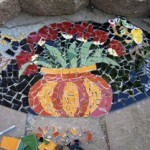
Inspired by parrot tulips years ago, I made this pique assiette mosaic on the step up into my garden
Fringed tulips feature a bloom edge that resembles fringe. The edges have also been described as frilly or ragged. Nevertheless, these are beautiful grouped together in an arrangement or simply enjoyed in a bed in the garden or a pot on the patio.
A bi-colored tulip surprises with a two-color bloom–perhaps an orange with a purple base. Prinses Irene is a beautiful specimen of this type of tulip.To see an image, check out https://www.whiteflowerfarm.com/211402-product.html
Rembrandt tulips are striped and tall and stand out anywhere they’re planted. Today’s version of this tulip is a non-viral variety (a virus is what originally caused the striping element of the standard tulip.
Emperor tulips feature bold color, large delicate blooms, and variable height. Although Emperor is the common name, these tulips also are known as Fosteriana tulips. They came from a wild mountainous species found in Central Asia. See, http://www.tulipworld.com/Fall-Planted-Bulbs/Tulips/Fosteriana-Tulip/Red-Emperor-Tulip.aspx
As its name implies, the Lily-flowering tulips in bloom have the appearance of lilies. The bloom looks like a star-shaped cup. Although color choices are limited, the hue is rich–for example, a fiery red with yellow-tinged edges of the Aladdin type. See, https://www.tulips.com/product/aladdin/lily-flowering-tulips
There are many more types of tulips–those I’ve mentioned are only a few. Now is the time to search your garden centers for the tulips you want blooming in your spring garden. There are many to choose from so if you don’t find what you’re looking for at your local nursery, check seed catalogs or online nurseries that can ship bulbs directly to you.
___________________________________________________________
If you enjoy reading about gardening topics, check out my Henny Penny Farmette series of cozy mysteries. Interspersed throughout the book are tips on growing plants, keeping bees and chickens, and delicious farm-to-table recipes and, of course, there’s a cozy mystery to solve.
A Beeline to Murder, The Murder of a Queen Bee, and A Hive of Homicides are all available from traditional bookstores everywhere and online. Click on the URL for more information: http://tinyurl.com/ya5vhhpm
When a couple is killed at a local winery after renewing their wedding vows, ex-cop turned farmette owner Abigail Mackenzie launches a personal investigation of her own. The victims are her good friend Paola Varela and Paola’s husband Jake Winston. Jake was a good-looking, a town flirt, and someone who’d had an affair that had ended tragically. Was he finally getting a karmic payback from an incensed husband or boyfriend? Or, was Paola the intended target?
Also see, http://tinyurl.com/yd7pz7af
Time to Harvest Seeds from Annuals
If you are like me, you hate to see anything wasted. Case in point, seeds from a summer flower garden.
Walking around my farmette this time of year, I see many seed pods on flowers that I can take off, dry, and store. Scores of my flowering plants are perennials that come back again next year, but may others are annuals, grown throughout one season.
Just because they are annuals doesn’t mean that I have to buy new seed in order to grow them next year. No. I will gather their seeds (found in flower heads or seedpods or the calyx, located at the base of the flower on the plant). I can then pull the annual and toss the plant biomass into compost pile. The seeds I’ve collected will be further dried and stored in paper envelopes labeled with the date collected and the plant’s name and color.
In the plant store you’ll find hybridized plants along with those NOT MARKED as F1 hybrids. Seeds you collect from the non-hybridized plants will come back true to their parents the next year. Non-hybrids include heirloom, open-pollinated plants that some gardeners (myself included) prefer for their gardens.
This year, I sowed zinnia seeds that I had collected two years ago. Tossing them into a bare area of the garden, I forgot about them. When they not only grew but bloomed profusely, I felt immensely pleased with myself for taking the time to collect that seed.
Zinnias are annuals. Their tiny seeds are located in the flower heads. They can be removed once the plant has finished blooming and dried.
Nasturtiums are annuals that drop their seeds (the size of a pinto bean) and will often re-seed where they’ve grown before. I like to collect these into paper envelopes and label according to color and whether they grow as a vine or bush. They actually prefer poor soil and bloom well in full sun (less so, in shade). Nasturtiums are also edible flowers–just wash, dry, and toss into a salad or use as a garnish.
Petunias are lovely annuals that carry their seed in the calyx (just under the flower). The calyx swells with seeds so you’ll want to remove the dead flowers along with the part of the stem that includes the calyx (top of stem) . Pull off the petals. When the calyx dries and splits open, you’ll see the seeds. Save these for planting.
Marigolds add splashes of bright yellow color to your garden. Remove the dead flowers and save part of the thickened stem beneath the flower head (the calyx). Split open the calyx at the top of the stem to find the long, slender seeds. Dry and save these for your next year’s flower garden.
There are lots of other annuals that you can grow in a flower garden if you take the time to harvest and dry their seeds. Consult a gardening guide or plant grower’s catalog to learn more about the annuals you might want to grow. Then give seed harvesting a try so that you’ll get all your favorite blooms in a future garden.
____________________________________________________
If you enjoy reading about gardening and other farming topics, check out my newest novel, A HIVE OF HOMICIDES. It contains not only an entertaining mystery but also tips for growing plants and trees, keeping chickens and bees, and making delicious farm-wholesome foods.
Click here to see more: http://tinyurl.com/ya5vhhpm
Add a Secret Ingredient to Kick-start Your Compost Pile
The leaves of my plum and cherry trees are beginning to drop. The fig leaves have dried to a crisp and are also falling. I’ve got pumpkin and squash vines and stalks of corn pulled and lying in piles in the garden.
This dead, particulate organic matter (detritus) in my garden is too good to throw in the green recycle bin for the city to compost. By composting it myself, I’ll save the money I might spend on buying compost next year.
If your garden has a pile or two of of similar detritus but you’ve had trouble getting it to break down into compost, you might be missing a secret ingredient.
Add one to two cups of a nitrogen-rich garden product like blood meal, bone meal, or cottonseed meal–all are available from your local nursery or garden center.
Follow these simple steps.
1. Dump a wheelbarrow load of leaves where you will be composting this fall and winter. I use a rectangular raised bed.
2. From a cup of blood meal, generously sprinkle the meal onto the leaves.
3. Layer onto the pile grass clippings, pumpkin and squash vines, corn cobs, chicken house straw, dried oats, weeds, and other biomass material.
4. Add more blood meal, more leaves, and more organic material.
5. Sprinkle the remaining blood meal from your cup onto the compost pile and then wet it using a garden hose.
6. Cover with plastic sheeting.
The compost pile generates heat as the plant material breaks down. Thoroughly turn at two or three week intervals. Keep the pile moist (not drenched) and covered.
Using this method, you can expect to have lovely nutrient-rich compost to use on your spring flower and vegetable gardens.
___________________________________________________________________
If you enjoy reading about gardening topics and you are a mystery lover, check out my Henny Penny Farmette series of mysteries from Kensington Publishing. Each charming novel features a wholesome whodunnit along with delicious recipes and farming facts and tips.
Click here to see more: http://tinyurl.com/ya5vhhpm
Join me for “Coffee and Conversation” at Towne Center Books in Pleasanton, The date is Wednesday, October 18, 2017, at 11:00 a.m. The address is: 555 Main Street, Pleasanton, California. Phone is (925) 846-8826.
I’ll be sharing information about my farmette, my mystery-writing process, and my newest novel, A HIVE OF HOMICIDES.
 Facebook
Facebook Goodreads
Goodreads LinkedIn
LinkedIn Meera Lester
Meera Lester Twitter
Twitter





